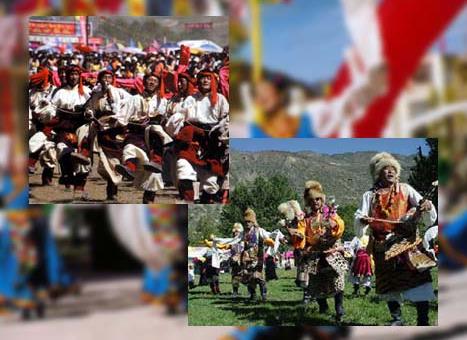
Xianzi, also called "Xie", "Ye" and "Baye", is a distinctive huqin of the Tibetan nationality. Xianzi Dance, also known as "Xianzi", is a Tibetan song and dance art form performed with the accompaniment of Xianzi. Xianzi Dance is distributed in eastern Tibet, Yunnan, Sichuan and Qinghai where Tibetan people live in concentrated communities. It is an indispensable self-entertaining song and dance form in the life of Tibetan people.
There is no fixed place for dancing Xianzi. The dancing hall could be anywhere smooth, like courtyard, roof or inside the room, and everyone, despite gender and age, could join in. Whenever there is a festival, joyous occasion or significant assembly, people will gather together and make a circle with men playing Xianzi and waving their long sleeves, singing antiphonally. With elegant lyrics, music and dancing, Xianzi Dance is very popular among the masses.
The lyrics for Xianzi Dance are largely about welcoming guests, reunion, praise, friendly sentiments, bidding farewell and making wishes. Xianzi Dance has diversified tunes, rich lyrics and various steps. While dancing, the men's team and the women's team will both make a semi-circle and join a circle from time to time while singing and dancing. Men's dancing focuses on dancing boots and stamping to show the beauty of boldness and boorishness, while women's dancing centers on showing the beauty of gentleness with the unfolding of their long sleeves. Xianzi Dance includes singing and dancing. The graceful dancing combines softness and strength. The accompanying instruments are played fast and fluently with a distinctive and bright rhythm. The tunes are mostly resounding and clear, bold and varied. The music structure is generally two-phrase, although there are also many four-phrase structures. A tune with multiple sections of lyrics will be sung repeatedly. The dance starts slow, picks up speed with the contents, and enters the climax with swiftly whirling steps. The songs have names of the tunes to which qu are composed, which are equivalent to names of the tunes to which ci poems are composed, and are "xie"-style folk songs (a class of Tibetan folk songs). The movements vary with the tune.





